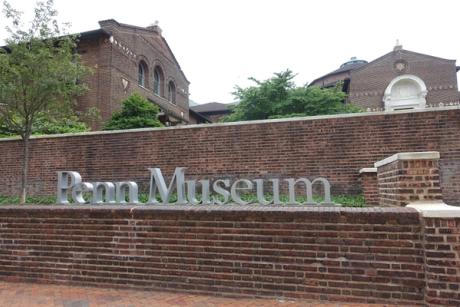The Penn Museum at the University of Pennsylvania in Philadelphia has found the remains of a second victim of the infamous 1985 police bombing of the home of activists from the group MOVE in its collection. The remains are believed to be those of the 12-year-old girl Delisha Africa, one of five children and six adults killed when the police dropped a bomb on their West Philadelphia home.
The Penn Museum has been conducting an audit of the materials in its biological anthropology section after it came under scrutiny in spring 2021, when it was revealed that its collection included the remains of another MOVE bombing victim and that they were being used as teaching materials by two anthropologists. Amid the ensuing uproar, the university commissioned an independent report by the Tucker Law Group; the resulting 217-page document condemned the anthropologists for showing “extremely poor judgement and gross insensitivity” in their handling of the human remains, but found that they had not violated any relevant professional, ethical or legal standards. Those remains were returned to members of the Africa family in July 2021.
Subsequently, the Penn Museum revised its policies regarding the handling of human remains, hired the scholar Rachel Watkins as a faculty-curator in bioanthropology and bioarchaeology and began to compile a comprehensive inventory of its biological anthropology section ahead of moving those materials to an upgraded storage facility. During that inventory process, on 12 November, workers at the museum found remains believed to be those of Delisha Africa. The museum immediately notified the Africa family.
“We are committed to full transparency with respect to any new evidence that may emerge,” a statement posted to the Penn Museum’s website reads. “Confronting our institutional history requires ever-evolving examination of how we can uphold museum practices to the highest ethical standards. Centring human dignity and the wishes of descendant communities govern the current treatment of human remains in the Penn Museum’s care.”
However, in a statement on 14 November, the Philadelphia city councilmember Jamie Gauthier criticised the museum for moving too slowly and not listening to citizens’ concerns about its collection of human remains.
“Over a year ago, activists alerted museum leadership that the institution still possessed the remains of Delisha Africa. The Penn Museum ignored them,” Gauthier said. “If they really cared about repairing the harm they caused, the Penn Museum would have quickly searched their archive when this injustice originally came to light in 2021. Because of their lethargy, the museum has once again traumatised the Africa family and our community.”
The MOVE bombing on 13 May 1985 was an extraordinarily violent attack by Philadelphia’s police against its citizens. Members of MOVE, a Black liberation group, had been engaged in a long-running conflict with authorities in the city in which a police officer had previously been killed. After members of the group refused to surrender to authorities earlier in the day, barricading themselves inside the house at 6221 Osage Avenue, the fire department fired high-powered water cannons at the house, and the police threw tear gas and explosives and fired more than 10,000 rounds of ammunition. When the MOVE members still refused to surrender, municipal leadership authorised the police to drop an improvised bomb on the house from a helicopter. The resulting explosion and fire—which burned out of control as police officers and firefighters looked on—killed 11 of the 13 people in the MOVE house and ultimately destroyed more than 60 homes in the neighbourhood.
Earlier this year, the Paul Robeson House & Museum in West Philadelphia hosted an exhibition about MOVE and the bombing on the occasion of its 39th anniversary.
Last month, the Penn Museum’s Penn Cultural Heritage Center launched a three-year project dubbed “Museums: Missions and Acquisitions Project” that will study the collecting practices at more than 450 US museums. Its goal is to codify current collecting standards across the sector and establish a framework for institutions to model their future practices.









